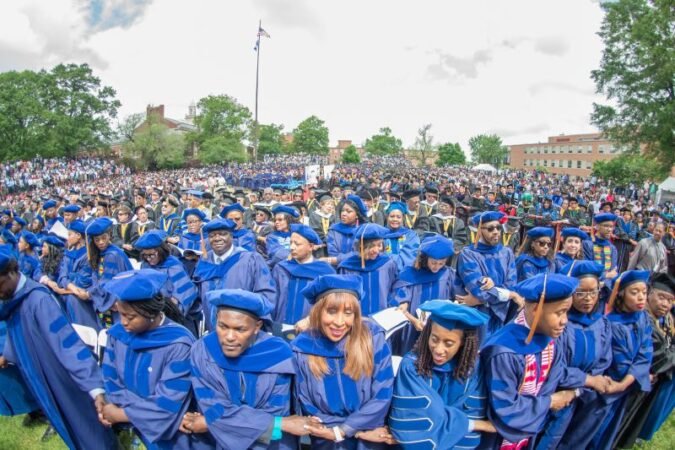Top Highlights
-
Claude Steele’s 1999 article in The Atlantic highlighted the detrimental effects of racist stereotypes on African Americans’ academic performance, sparking extensive research on stereotype threat and its implications in education and beyond.
-
The significance of shared group identity and commonality in promoting collaboration and effective group dynamics underscores the need for inclusive strategies in STEM fields to enhance participation from underrepresented minorities.
-
Despite dire forecasts for STEM participation, minority-serving institutions are crucial for training future scientists; however, they often lack essential funding and resources, perpetuating a cycle of underrepresentation.
- NSF’s "Build and Broaden" initiative aims to address funding disparities by fostering collaboration between minority-serving institutions, enabling them to strengthen their research capabilities and increase minority representation in STEM.
Fighting stereotypes in the world of science demands persistent effort and resilience. Research reveals that negative stereotypes significantly impact academic performance, particularly among African Americans. Claude Steele’s pivotal work from the 1990s highlights this phenomenon, encapsulated in his term “stereotype threat.” As he found, when individuals face the weight of societal stereotypes, their performance often falters. This deeply resonated with many, including those within the academic community.
I have experienced this first-hand, working as one of the few African Americans in a leading psychology department. I faced skepticism regarding my abilities due to my identity. The challenges were multifaceted. Beyond typical academic pressures, I grappled with the doubt cast upon me by colleagues and peers who questioned my legitimacy. This undercurrent of expectation to conform to a stereotype hindered my pursuit for excellence.
Yet, I sought to transform adversity into understanding. My research examined how group dynamics can either uplift or hinder individuals. Through this lens, I recognized a common thread—the necessity for inclusion. Inclusion fosters productivity and collaboration, which are essential in collective endeavors, especially in science, technology, engineering, and mathematics (STEM).
The National Science Foundation (NSF) acknowledges these findings by investing in broadening participation in STEM fields, particularly among minorities. Their programs focus on inclusion and seek to dismantle barriers that have historically restricted access to scientific disciplines. Workshops and symposiums launched by NSF gather researchers to explore effective strategies for increasing diversity in STEM.
Despite the obstacles we face, optimism persists. A diverse scientific community not only thrives but also drives innovation. Diverse teams produce richer ideas and solutions. However, this potential often diminishes as fewer students from minority backgrounds pursue careers in STEM.
Statistics reveal troubling trends. Though underrepresented minorities constitute a substantial portion of the U.S. population, their presence in STEM fields remains disproportionately low. Institutions that educate these students often lack the resources necessary to support their research and professional development. This funding imbalance perpetuates a cycle of underrepresentation.
Recognizing this, NSF initiated the Build and Broaden program. This initiative provides funding opportunities for minority-serving institutions to foster partnerships and enhance research capabilities. By empowering these institutions, we can uplift the next generation of scientists and engineers. The mission extends beyond academia; it is about building a just society where everyone has the chance to contribute to scientific discovery.
Engagement in programs like Build and Broaden can revolutionize our scientific landscape. Faculty and staff at minority-serving institutions should actively pursue these opportunities. The mission is clear: empower students to rise above stereotypes and embrace their potential in science.
Fostering a diverse scientific community enriches our understanding and strengthens our future. Let’s harness this potential together, creating pathways for all individuals to thrive in the world of science. Encourage your peers, challenge stereotypes, and pursue excellence. Science has a place for everyone willing to explore it.
Expand Your Tech Knowledge
Explore the future of technology with our detailed insights on Artificial Intelligence.
Explore past and present digital transformations on the Internet Archive.
TechV1

